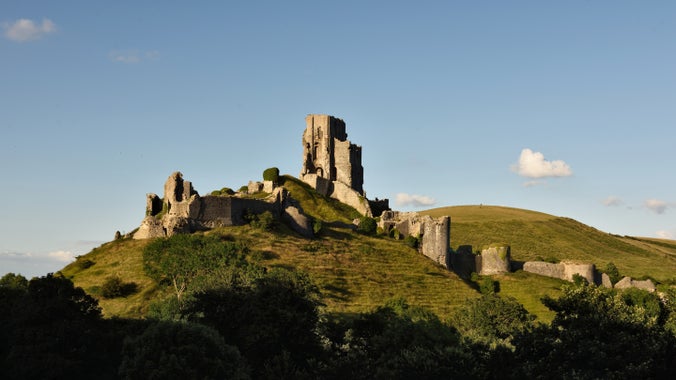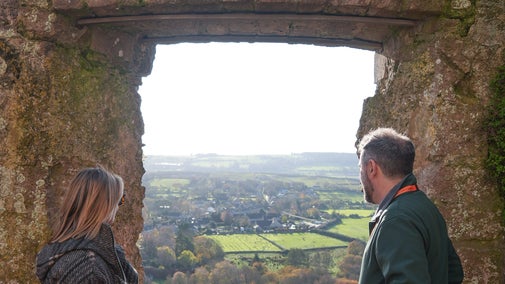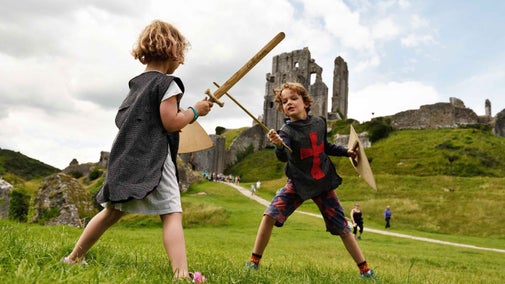
Become a member
Join today and help protect nature, beauty and history – for everyone, for ever. Enjoy access to more than 500 places with National Trust membership.
Thousand-year-old royal castle shaped by warfare
The Square, Corfe Castle, Nr Wareham, Dorset, BH20 5EZ

Experience the charm of Corfe Castle this Christmas. Explore the ruins to find festive scenes, toast marshmallows around firepits, enjoy family crafting activities or for an extra touch of magic, experience the ambience of the castle at night.

For the first time since 1646 you can ascend the Kings' Tower at Corfe Castle to experience panoramic views and rare historical features - once only reserved for royalty. Book on to one of our tours here.

Our events are designed to ensure everyone has a great day out. Find out more here.

Corfe Castle is the perfect place to enjoy a fun-filled family day out. There is always something new to explore and join in with a jam-packed programme of events.

To ensure as many people as possible can enjoy the historic ruins, discover how we're making Corfe Castle as accessible to all.

Well-behaved dogs on leads are welcome at Corfe Castle all year round. Find out more about where you can take your dog and the facilities available.

Find out everything you need to know about booking a group visit to Corfe Castle, from admission prices to information about school visits.

Perched above a picture postcard village with panoramic views of the Purbeck countryside, the fairy-tale ruins of this 1,000 year old castle make for the perfect setting for your romantic wedding ceremony.


Join today and help protect nature, beauty and history – for everyone, for ever. Enjoy access to more than 500 places with National Trust membership.